Abstract
Infection of wild marmosets (Saguinus mystax) with strains of parainfluenza virus types 1 and 3 resulted in acute respiratory infection. Virus replication in the upper respiratory tract was of a degree similar to that seen in children acutely infected with parainfluenza viruses. Serum antibody developed with both virus types; however, local secretory antibody was not detectable. The infection was transmissible to susceptible animals up to 3 days inoculation of the primary animal.
Full text
PDF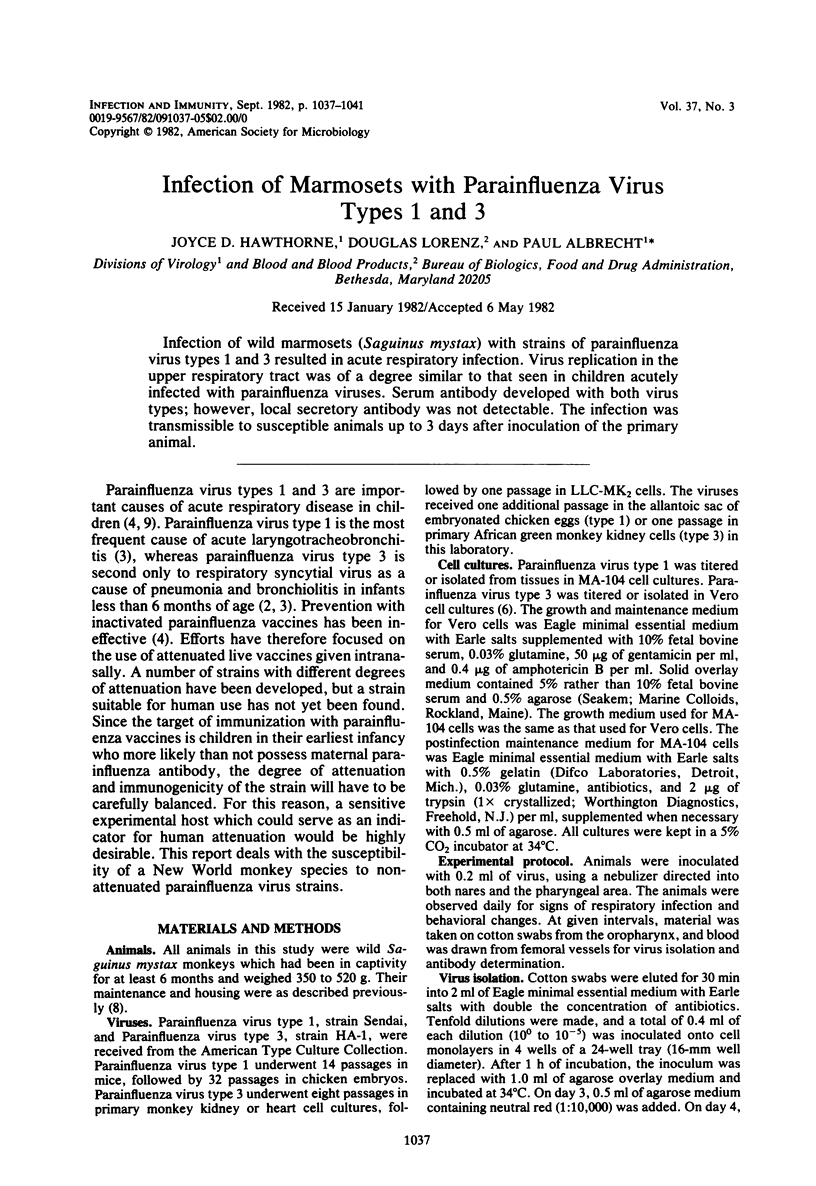
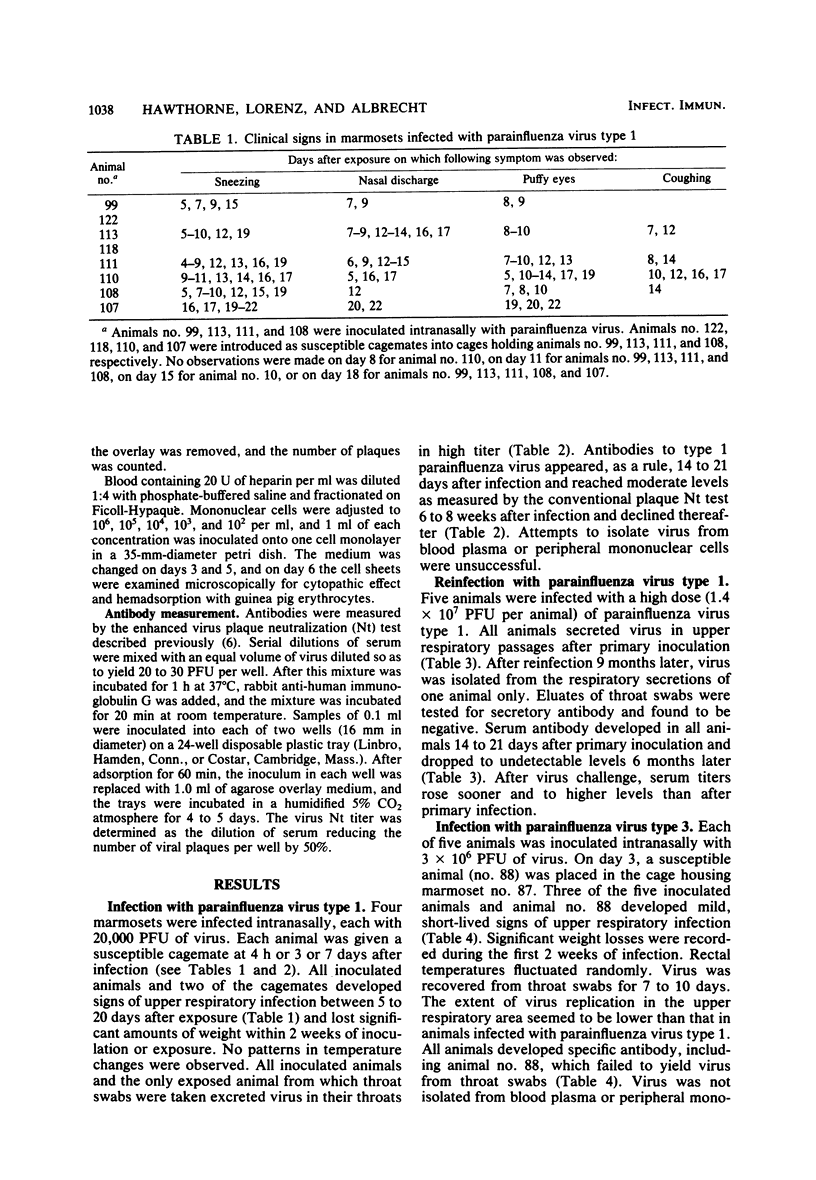
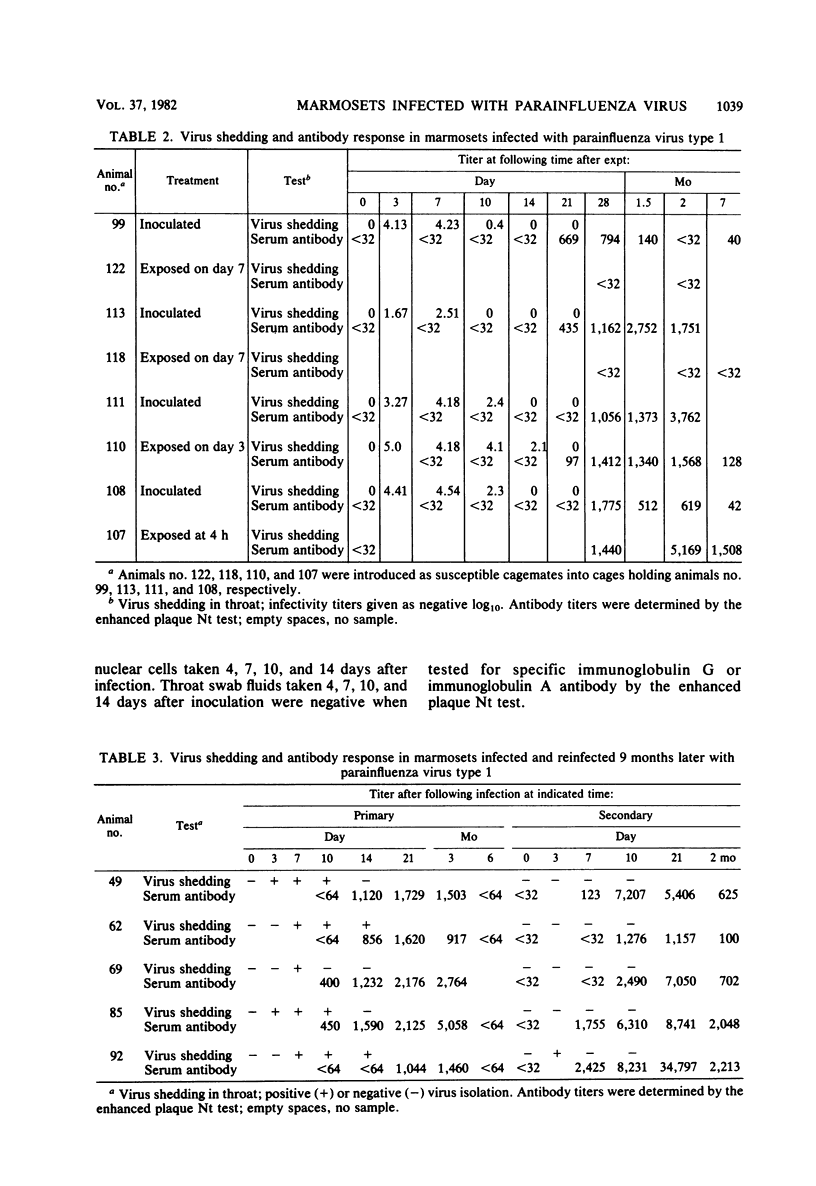
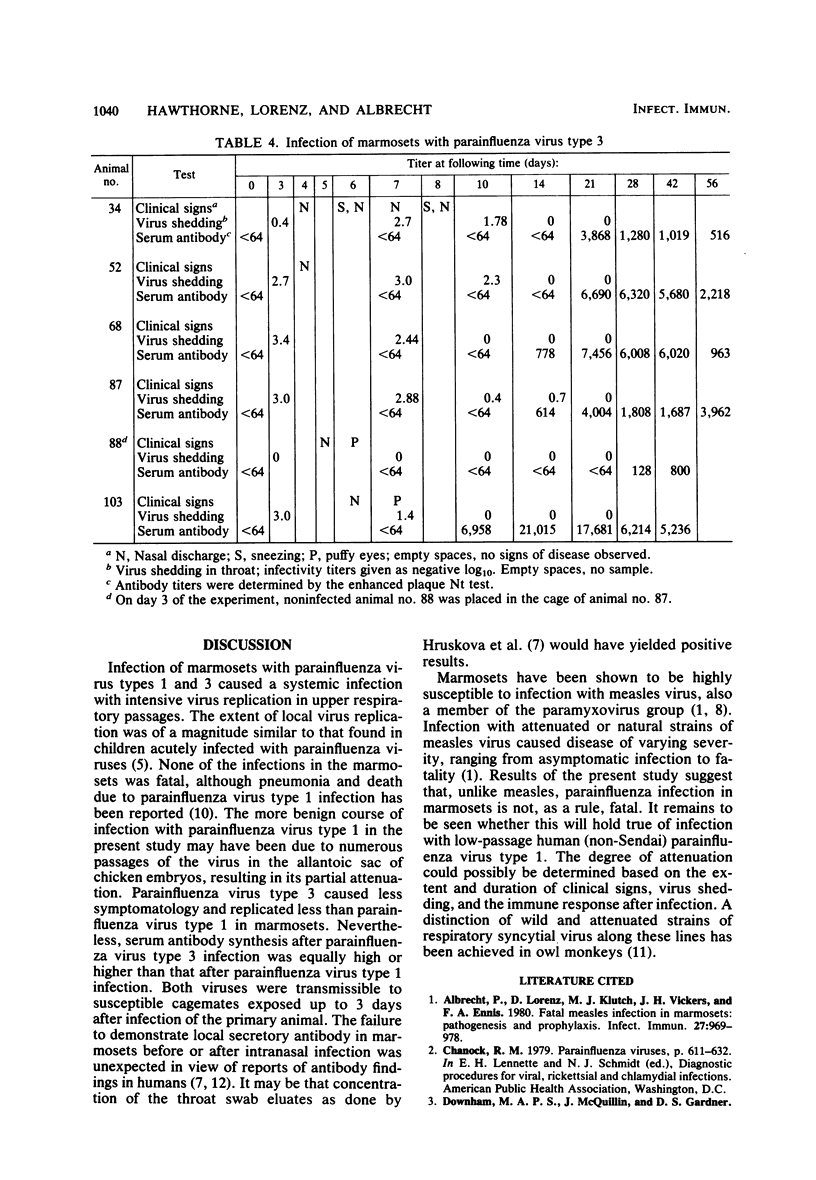
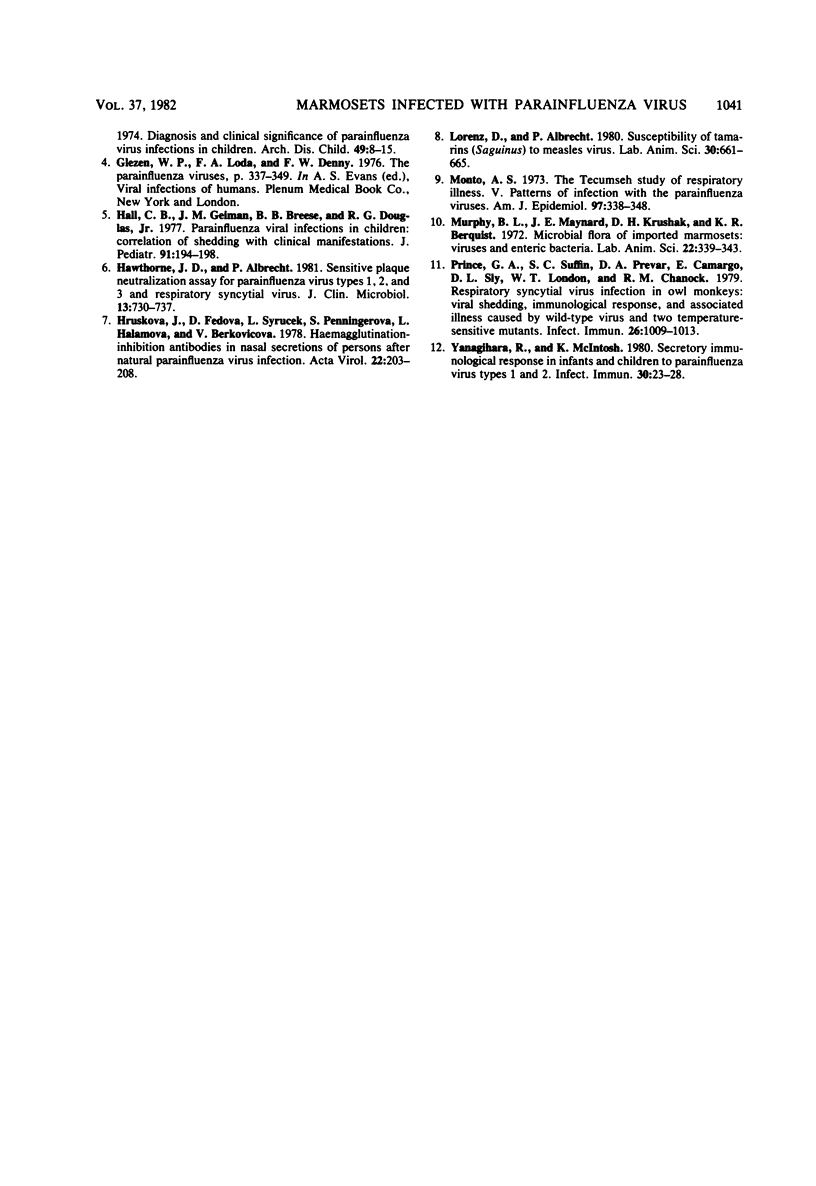
Selected References
These references are in PubMed. This may not be the complete list of references from this article.
- Albrecht P., Lorenz D., Klutch M. J., Vickers J. H., Ennis F. A. Fatal measles infection in marmosets pathogenesis and prophylaxis. Infect Immun. 1980 Mar;27(3):969–978. doi: 10.1128/iai.27.3.969-978.1980. [DOI] [PMC free article] [PubMed] [Google Scholar]
- Hall C. B., Geiman J. M., Breese B. B., Douglas R. G., Jr Parainfluenza viral infections in children: correlation of shedding with clinical manifestations. J Pediatr. 1977 Aug;91(2):194–198. doi: 10.1016/s0022-3476(77)80811-1. [DOI] [PubMed] [Google Scholar]
- Hawthorne J. D., Albrecht P. Sensitive plaque neutralization assay for parainfluenza virus types 1, 2, and 3 and respiratory syncytial virus. J Clin Microbiol. 1981 Apr;13(4):730–737. doi: 10.1128/jcm.13.4.730-737.1981. [DOI] [PMC free article] [PubMed] [Google Scholar]
- Hrusková J., Fedová D., Syrůcek L., Penningerová S., Holanová L., Berkovicová V. Haemagglutination inhibition antibodies in nasal secretions of persons after natural parainfluenza virus infection. Acta Virol. 1978 May;22(3):203–208. [PubMed] [Google Scholar]
- Lorenz D., Albrecht P. Susceptibility of tamarins (Saguinus) to measles virus. Lab Anim Sci. 1980 Aug;30(4 Pt 1):661–665. [PubMed] [Google Scholar]
- Monto A. S. The Tecumseh study of respiratory illness. V. Patterns of infection with the parainfluenzaviruses. Am J Epidemiol. 1973 May;97(5):338–348. doi: 10.1093/oxfordjournals.aje.a121514. [DOI] [PubMed] [Google Scholar]
- Murphy B. L., Maynard J. E., Krushak D. H., Berquist K. R. Microbial flora of imported marmosets: viruses and enteric bacteria. Lab Anim Sci. 1972 Jun;22(3):339–343. [PubMed] [Google Scholar]
- Prince G. A., Suffin S. C., Prevar D. A., Camargo E., Sly D. L., London W. T., Chanock R. M. Respiratory syncytial virus infection in owl monkeys: viral shedding, immunological response, and associated illness caused by wild-type virus and two temperature-sensitive mutants. Infect Immun. 1979 Dec;26(3):1009–1013. doi: 10.1128/iai.26.3.1009-1013.1979. [DOI] [PMC free article] [PubMed] [Google Scholar]
- Yanagihara R., McIntosh K. Secretory immunological response in infants and children to parainfluenza virus types 1 and 2. Infect Immun. 1980 Oct;30(1):23–28. doi: 10.1128/iai.30.1.23-28.1980. [DOI] [PMC free article] [PubMed] [Google Scholar]


